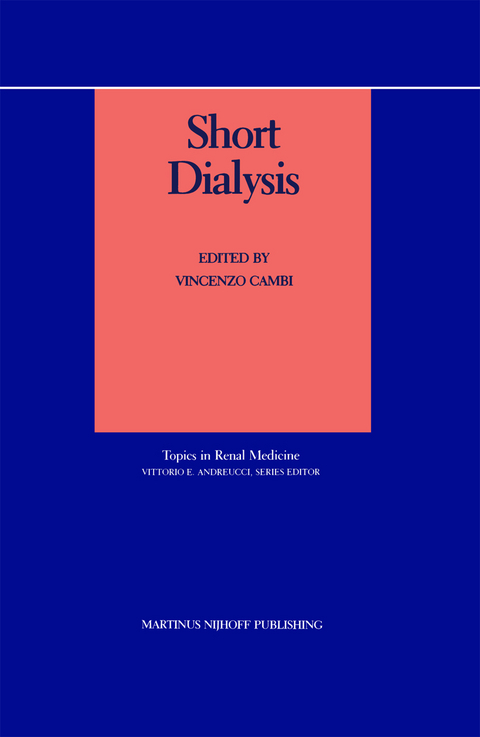
Short Dialysis
Kluwer Academic Publishers (Verlag)
978-0-89838-858-9 (ISBN)
1. Short dialysis 1971-1986: the first experience.- 2. Short dialysis: a single center study.- 3. Hemodialysis strategies in European countries.- 4. Middle molecule hypothesis and short dialysis.- 5. Features of uremic peripheral polyneuropathy in the light of experience with the short hemodialysis schedule (SHS).- 6. Nutritional status and nitrogen metabolism in patients treated with short dialysis.- 7. Nutrition in dialysis patients.- 8. Acid-base metabolism in short dialysis.- 9. Modeling dialysis therapy.- 10. Aluminum intoxication.- 11. Water treatment for the preparation of the dialysate.- 12. ‘On-site’ preparation of sterile apyrogenic electrolyte solutions for hemofiltration and hemodiafiltration.- 13. Present clinical experience and future aspects of hemodiafiltration.- 14. Cardiovascular stability in hemodialysis and hemofiltration.
| Reihe/Serie | Topics in Renal Medicine ; 3 |
|---|---|
| Zusatzinfo | XVI, 370 p. |
| Verlagsort | New York |
| Sprache | englisch |
| Maße | 155 x 235 mm |
| Themenwelt | Medizinische Fachgebiete ► Innere Medizin ► Nephrologie |
| ISBN-10 | 0-89838-858-9 / 0898388589 |
| ISBN-13 | 978-0-89838-858-9 / 9780898388589 |
| Zustand | Neuware |
| Haben Sie eine Frage zum Produkt? |
aus dem Bereich


